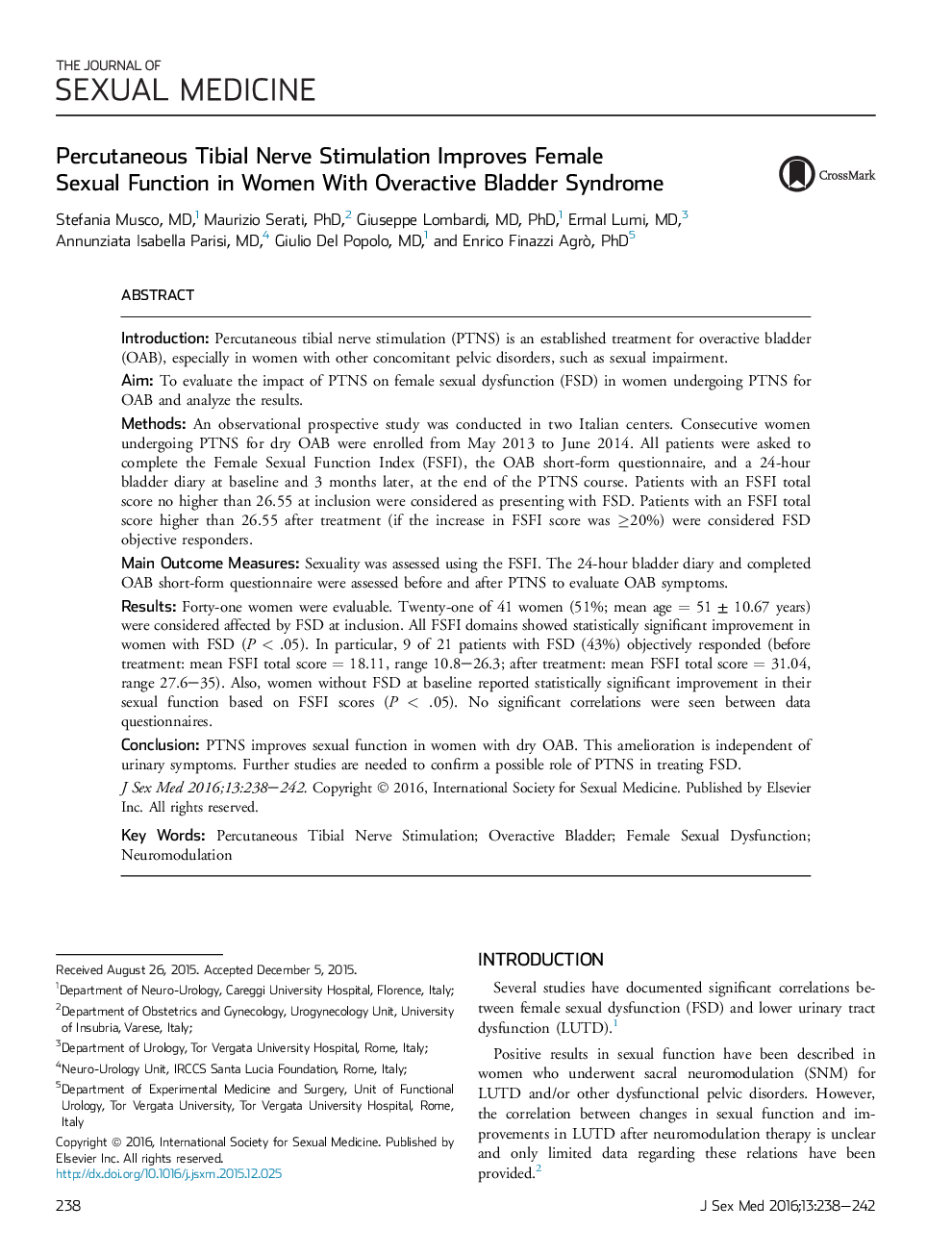| Article ID | Journal | Published Year | Pages | File Type |
|---|---|---|---|---|
| 4269295 | The Journal of Sexual Medicine | 2016 | 5 Pages |
IntroductionPercutaneous tibial nerve stimulation (PTNS) is an established treatment for overactive bladder (OAB), especially in women with other concomitant pelvic disorders, such as sexual impairment.AimTo evaluate the impact of PTNS on female sexual dysfunction (FSD) in women undergoing PTNS for OAB and analyze the results.MethodsAn observational prospective study was conducted in two Italian centers. Consecutive women undergoing PTNS for dry OAB were enrolled from May 2013 to June 2014. All patients were asked to complete the Female Sexual Function Index (FSFI), the OAB short-form questionnaire, and a 24-hour bladder diary at baseline and 3 months later, at the end of the PTNS course. Patients with an FSFI total score no higher than 26.55 at inclusion were considered as presenting with FSD. Patients with an FSFI total score higher than 26.55 after treatment (if the increase in FSFI score was ≥20%) were considered FSD objective responders.Main Outcome MeasuresSexuality was assessed using the FSFI. The 24-hour bladder diary and completed OAB short-form questionnaire were assessed before and after PTNS to evaluate OAB symptoms.ResultsForty-one women were evaluable. Twenty-one of 41 women (51%; mean age = 51 ± 10.67 years) were considered affected by FSD at inclusion. All FSFI domains showed statistically significant improvement in women with FSD (P < .05). In particular, 9 of 21 patients with FSD (43%) objectively responded (before treatment: mean FSFI total score = 18.11, range 10.8–26.3; after treatment: mean FSFI total score = 31.04, range 27.6–35). Also, women without FSD at baseline reported statistically significant improvement in their sexual function based on FSFI scores (P < .05). No significant correlations were seen between data questionnaires.ConclusionPTNS improves sexual function in women with dry OAB. This amelioration is independent of urinary symptoms. Further studies are needed to confirm a possible role of PTNS in treating FSD.
